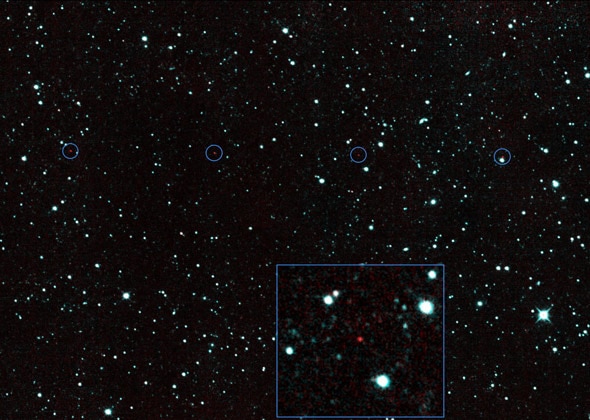Create a free profile to get unlimited access to exclusive videos, sweepstakes, and more!
NEOWISE Bags Its First Asteroid!

NEOWISE, NASAâs reanimated infrared space mission, has found its first asteroid!
Well, that didnât take long. Not that I expected it would.
Called 2013 YP139, the rock is about 650 meters (0.4 miles) across. Itâs on a highly elliptical orbit that takes it out from the Sun past Mars, and back in to just inside the Earthâs orbit. Itâs actually a near-Earth asteroid; it can potentially swing by as close as 500,000 kilometers (300,000 miles) from our planet, a bit farther out than the Moon. The orbit is still uncertain right now, but rest easy: It seems likely it wonât get anywhere near the Earth for quite some time, probably a century or so.
NEOWISE stands for the Near-Earth Object Wide-field Infrared Survey Explorer. It used to be just WISE when it first launched; it operated for about a year, surveying the sky in infrared. It took amazing images of gas clouds, galaxies, and asteroids. Especially asteroids; they glow in the infrared and are actually easier to see in IR than visible light.
WISE ran out of coolant after a year in orbit. However, NASA decided to resurrect the mission, repurposing it to look for potentially hazardous asteroids (and no doubt wanting to tie it in with their plans to capture an asteroid as well). In September 2013 it was switched back on, its name was changed, and the hunt began anew.
NEOWISE started seeing asteroids right away, but it wasnât until Dec. 29 that it found YP139, its first new one (that is, one never observed before). An added benefit to using NEOWISE for this search is that asteroid sizes are easier to determine when theyâre observed in the IR. In visible light, a big dark rock can masquerade as a smaller, shinier one, but in the infrared they canât hide their size. The more we know about each individual asteroid, obviously, the better.
NEOWISE is also paving the way for a next generation asteroid hunter called NEOCam, the Near-Earth Object Camera. This is already being tested at NASAâs JPL and will scan the skies looking for potential Earth impactors. Together with the B612 Foundationâs Sentinel mission, in the next few years we may finally start getting serious about looking for rocks with our name on them. Oddly enough, Iâm all for this.
YP139 may be the first, but astronomers expect to find hundreds more over the next few years. My congratulations to my pal Amy Mainzer, the NEOWISE principal investigator, and the team that made this mission possible!














